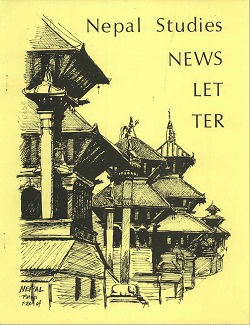Author Biography
This submission is the property of the Association for Nepal and Himalayan Studies (ANHS).
Abstract
The study advanced the argument that conflict could occur when there are horizontal inequalities (HIs) which sustain for a longer time, thus giving an opportunity to the leaders to mobilize the dissatisfied caste and ethnic groups. Using the data of 1990s and early years of the new millennium, the study validates the argument by presenting data on four dimensions of the HIs – cultural, economic, social and political. It looked into language and religion for explaining cultural HIs; poverty, income, employment related indicators for economic HIs; literacy rate, educational attainment, and human development index for social HIs; and participation in state organs for political HIs at two points of time. The study found that there are high inequalities between different caste and ethnic groups of Nepal in the four dimensions. The situation of excluded caste and ethnic groups such as Dalits, Janajatis, Madhesi and Muslims is same as before or even worsening compared to Brahmin/Chhetri and Newar (BCN). On the economic front, poverty rate decreased for all groups, but the rate of decrease was low for excluded groups and high for BCN, thus increasing the inequality between them. Similarly, the rate of increase in literary rate of excluded groups was less than that of BCN. In fact, the proportion of graduates from Janajati was less in 2001 than in 1991. Thus, the level of human development of excluded is still less than that of BCN. On the political front, the state and its organs were not inclusive and ruled generally by the same BCN even after the restoration of democracy in 1990.Thus, there was not much change in the power sharing even after 1990. Moreover, there was sustained lack of recognition of the religion and language of excluded groups, which bound them together to fight against the discriminatory policies of state. Thus, the higher and ever-continuing inequalities and grievances of various caste and ethnic groups provided a solid base for the unsatisfied Maoist leaders to trigger conflict. They mobilized these excluded groups to rise against the exclusionary state since 1996. The onset of conflict accelerated with the start of the new millennium, reaching at its apex in the 2002. This was mainly because of growing inequality owing mainly to lack of adequate redress from the state. Thus, ending inequalities and discrimination between groups is necessary in order to prevent civil war in Nepal. This requires a transformation of both the state and society.
Acknowledgements
An earlier version of the paper was presented at a regional conference, Pluralism in South Asia, organised by National Peace Council and DFID, Sri Lanka, 23 – 25 March 2008. The author thanks Dr. Mahendra Lawoti, Associate Professor, Department of Political Science, Western Michigan University for comments and suggestions on the initial draft of the paper. The author would also like to thank the editor of the Journal and the two anonymous peer reviewers for their comments on the draft version of the paper.
Creative Commons License

This work is licensed under a Creative Commons Attribution 4.0 License.
Recommended Citation
Tiwari, Biswa Nath. 2010. Horizontal Inequalities and Violent Conflict in Nepal. HIMALAYA 28(1).
Available at:
https://digitalcommons.macalester.edu/himalaya/vol28/iss1/3


